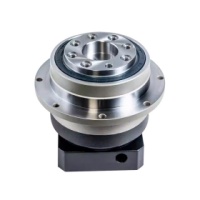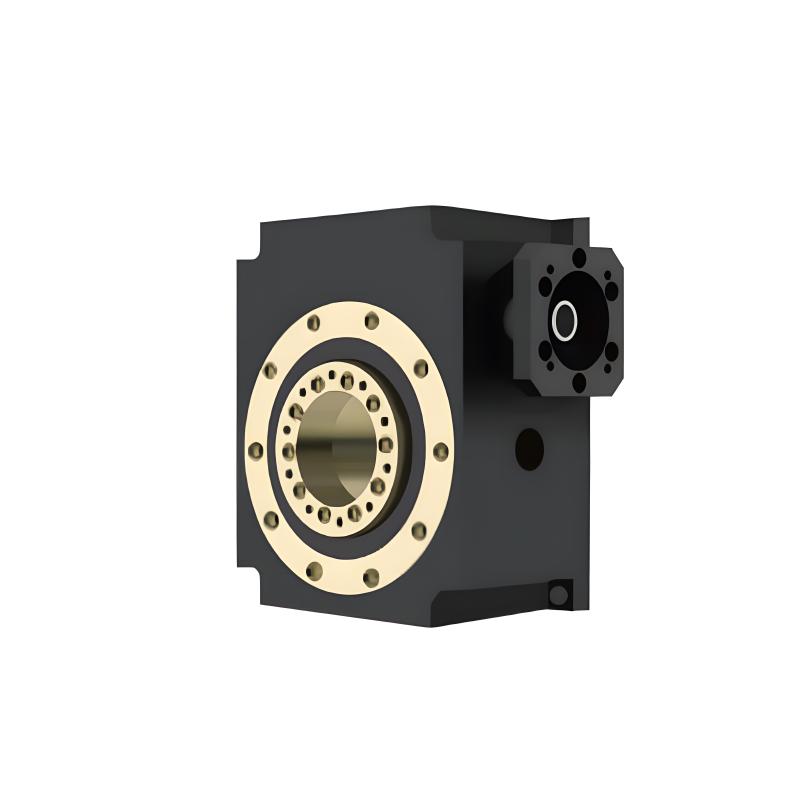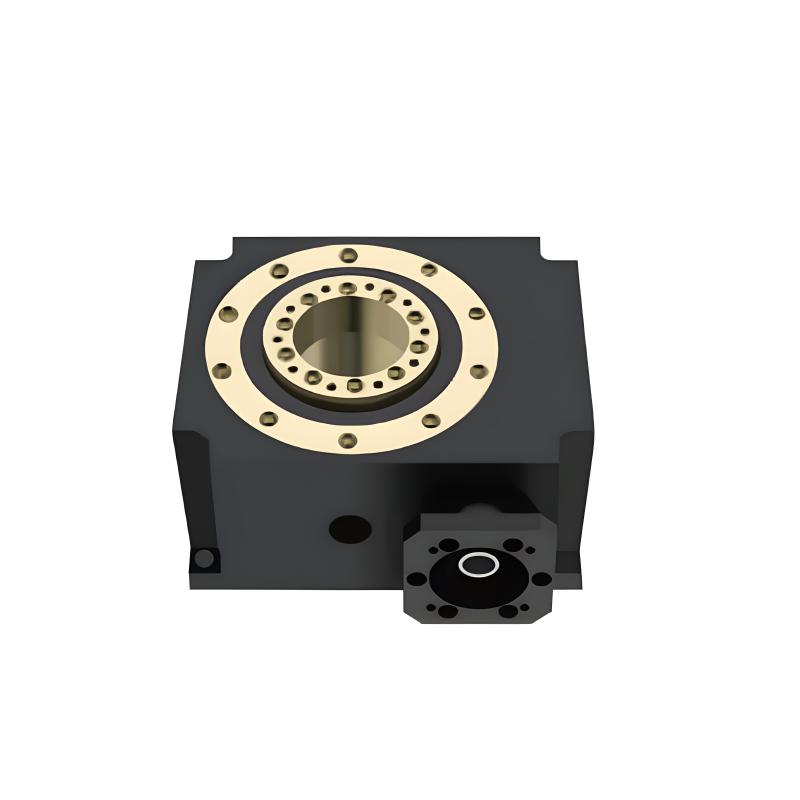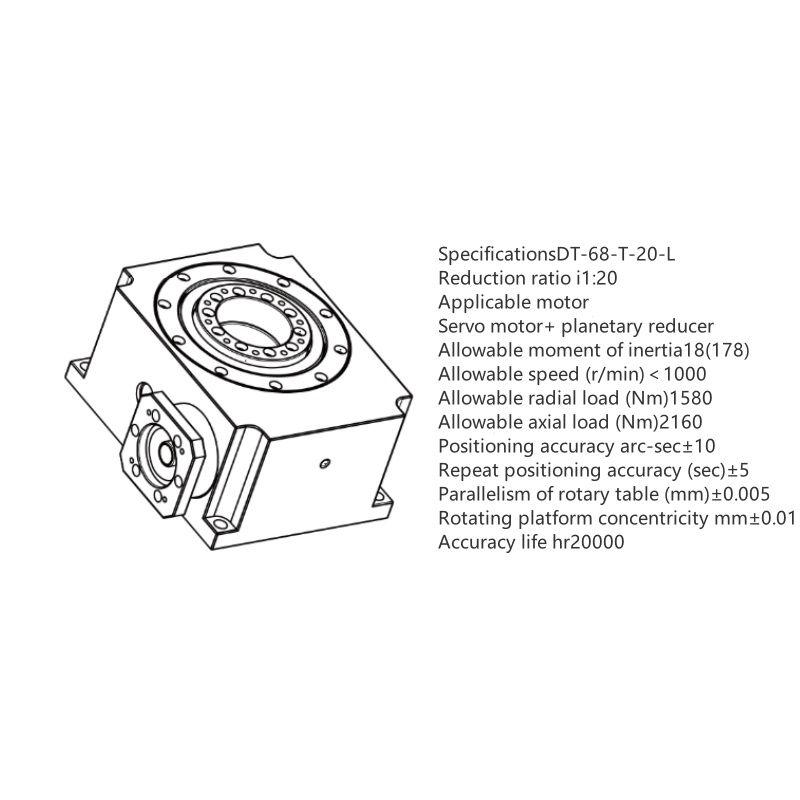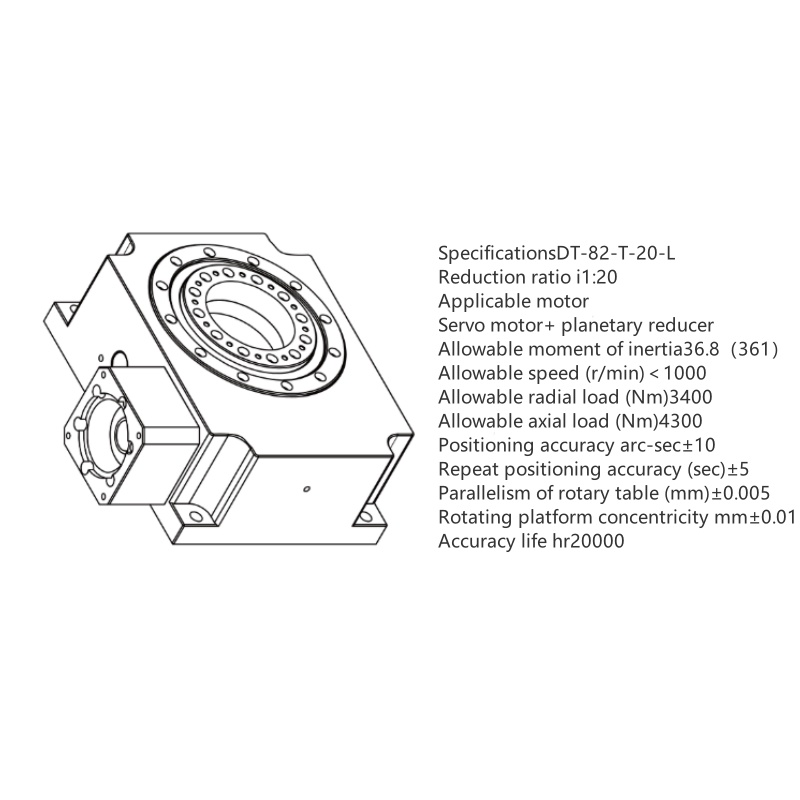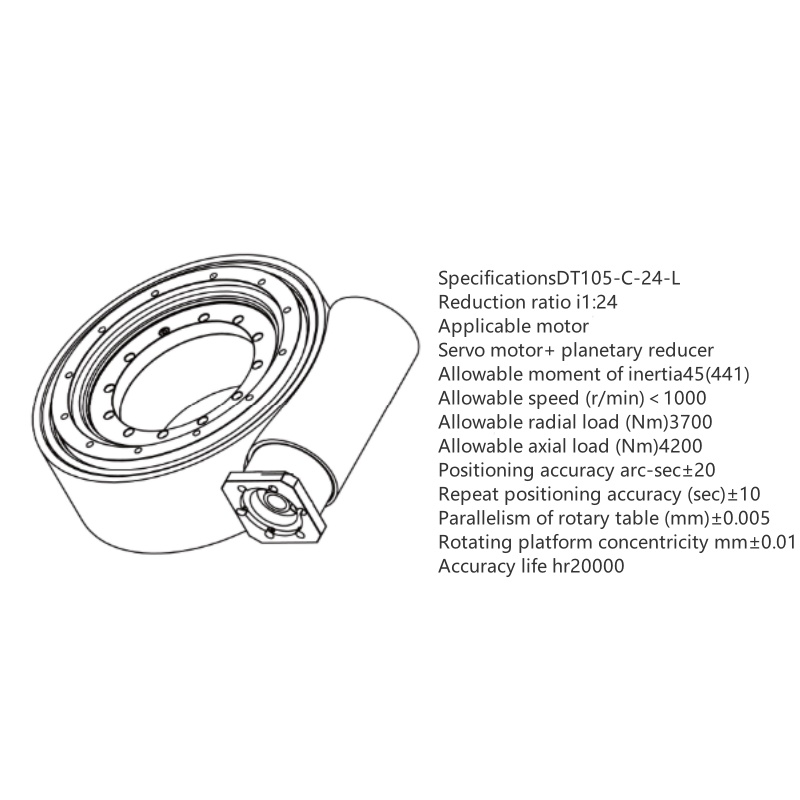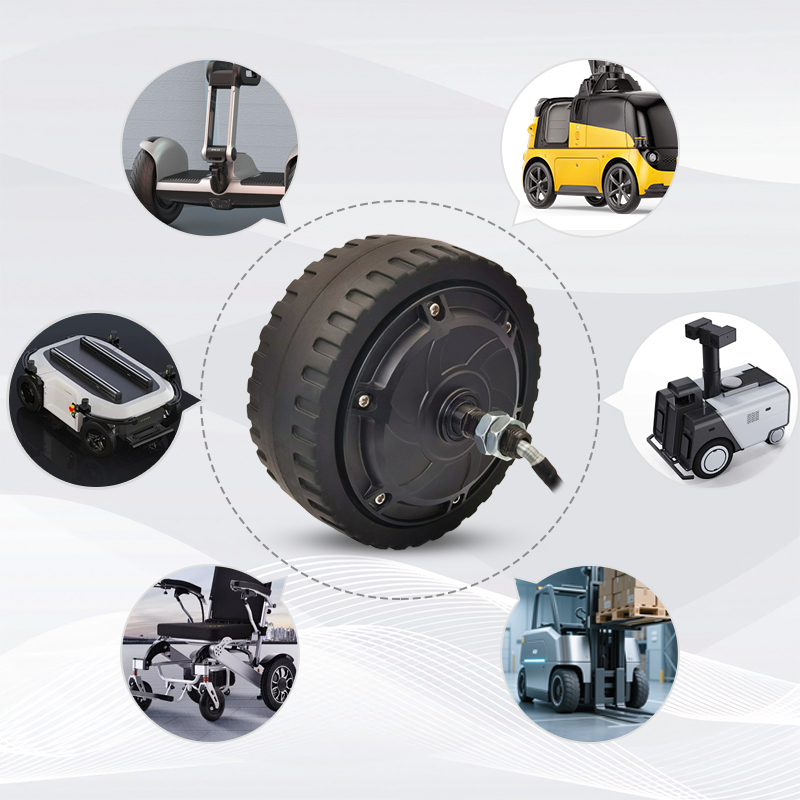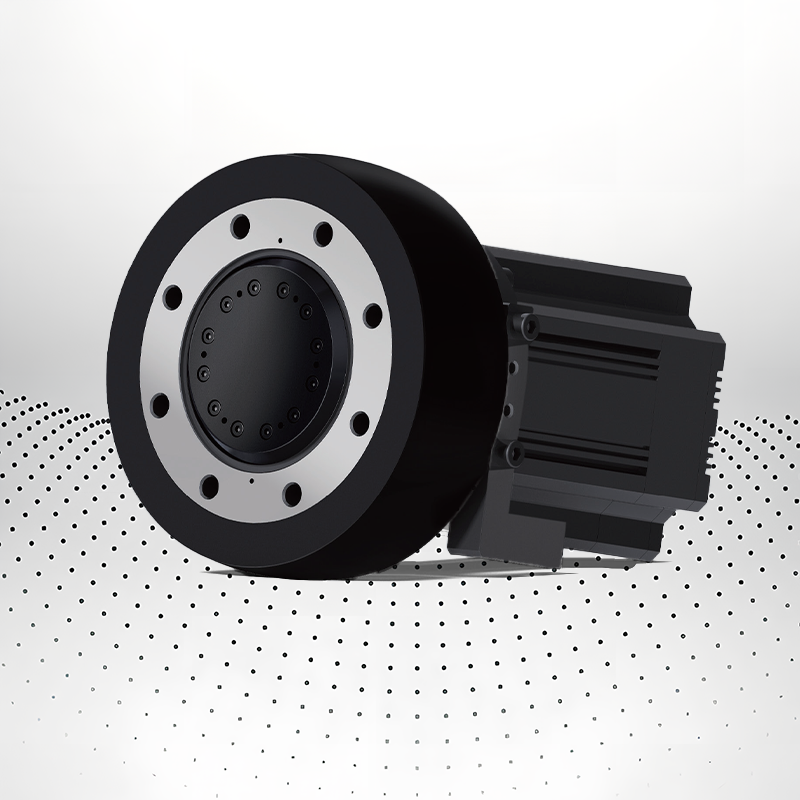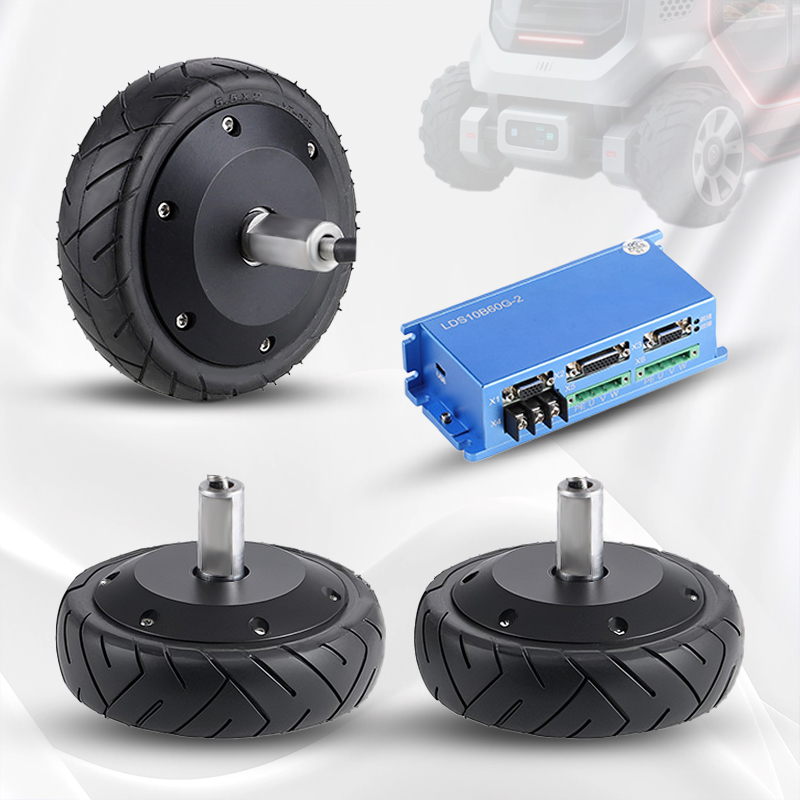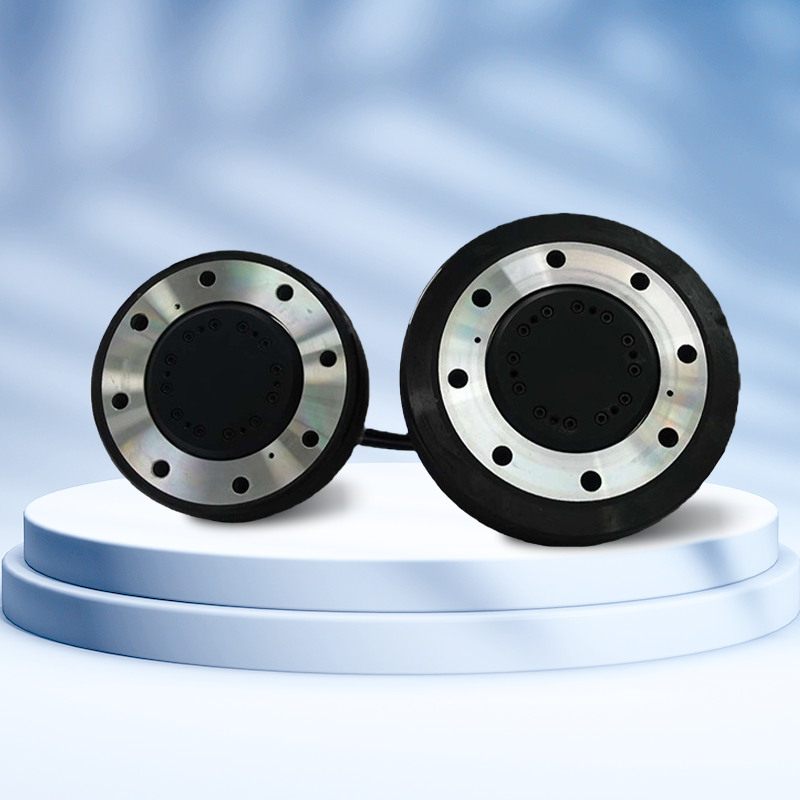Product Description
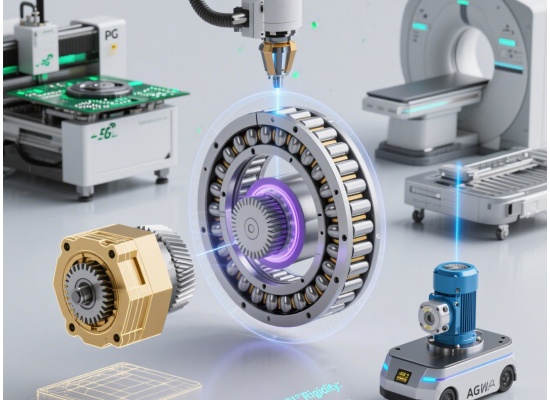
The hollow rotating platform is suitable for various rotational motion occasions.It uses bearings and transmission devices to realize the rotation of objects. It can replace cam separators and DD motors, and integrates work efficiency, high precision, high rigidity, high cost performance, and accurate control of high-precision implementation design and control systems.The hollow rotating platform can also be segmented at any angle with AC servo motors or stepper motors to meet users’ requirements for digital control, greatly reducing equipment costs. Because of its own advantages, it is widely used in a variety of rotational motion occasions and industrial production fields, bringing a lot of convenience to users. The hollow rotating platform is suitable for various rotational motion occasions.
Functional Features
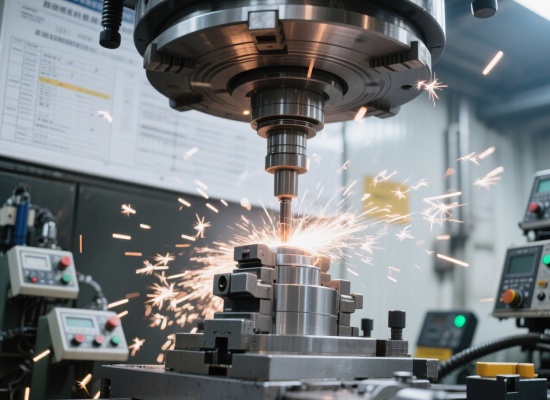
Compact structure
The integrated design is exquisite and regular, with small space occupation. The motor side connection/side shaft is suitable for narrow scenes and easy to integrate.
High precision
The gear precision is below level 5, fine grinding, matched with bearing technology, and repeated positioning ±5 arc seconds to meet precision requirements.
High stability
The cross roller bearing support, preload design resists multiple torques, strong rigidity, low vibration, and smooth rotation.
Load capacity
High-strength material + optimized structure, can carry light to heavy objects, and adapt to multiple industrial scenarios.
Dimensional drawing
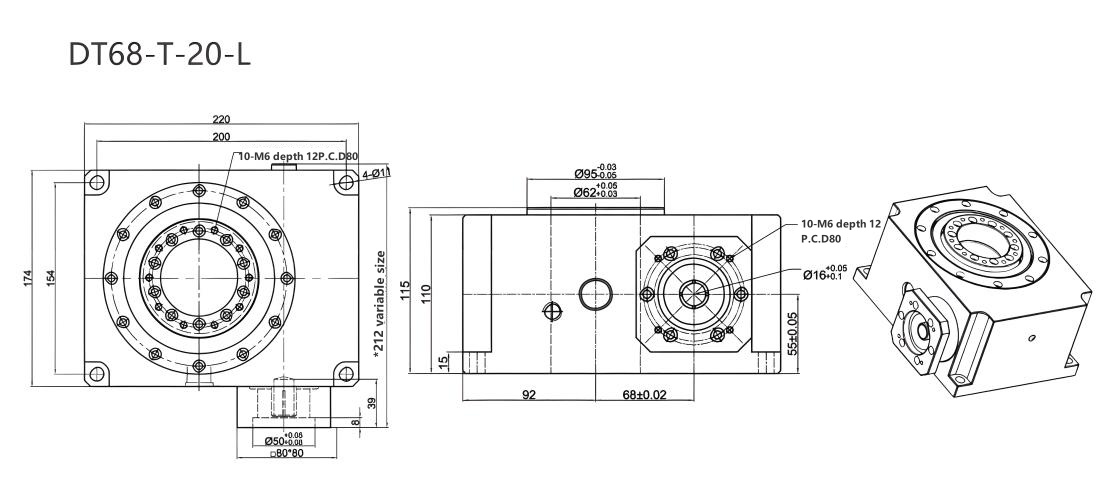
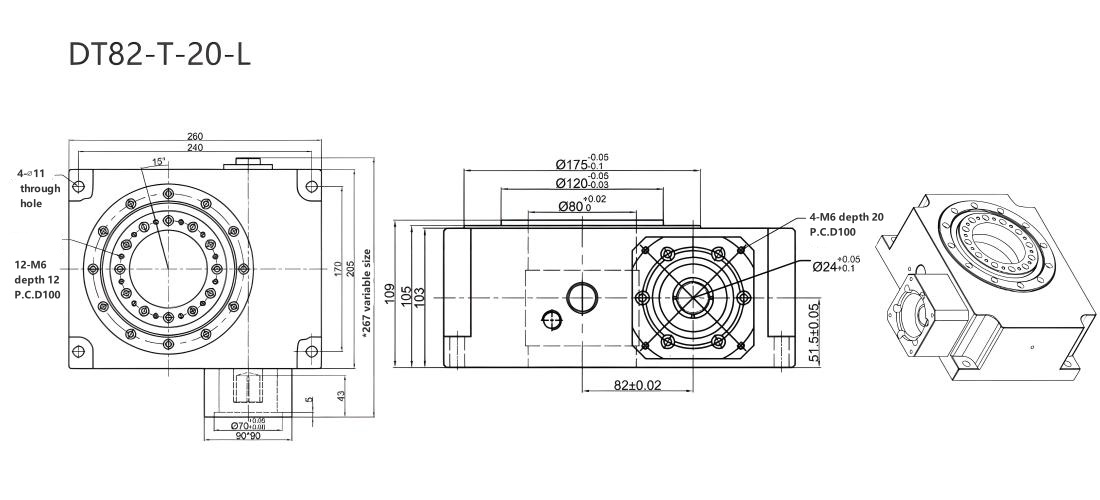
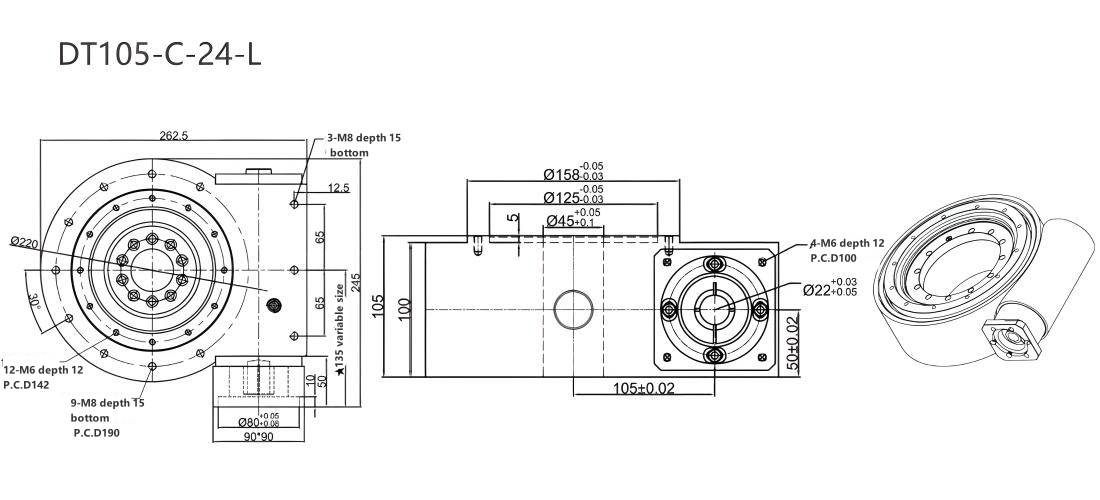
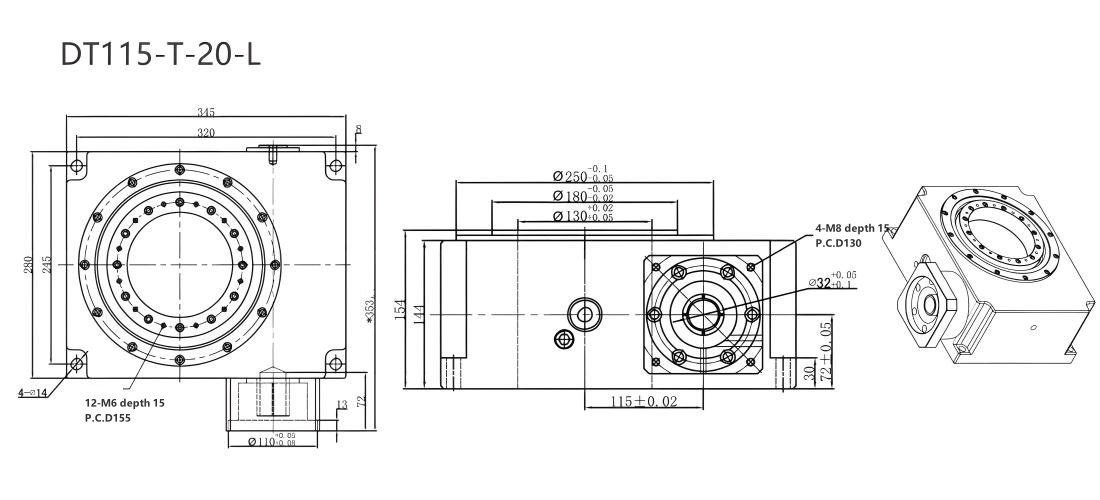
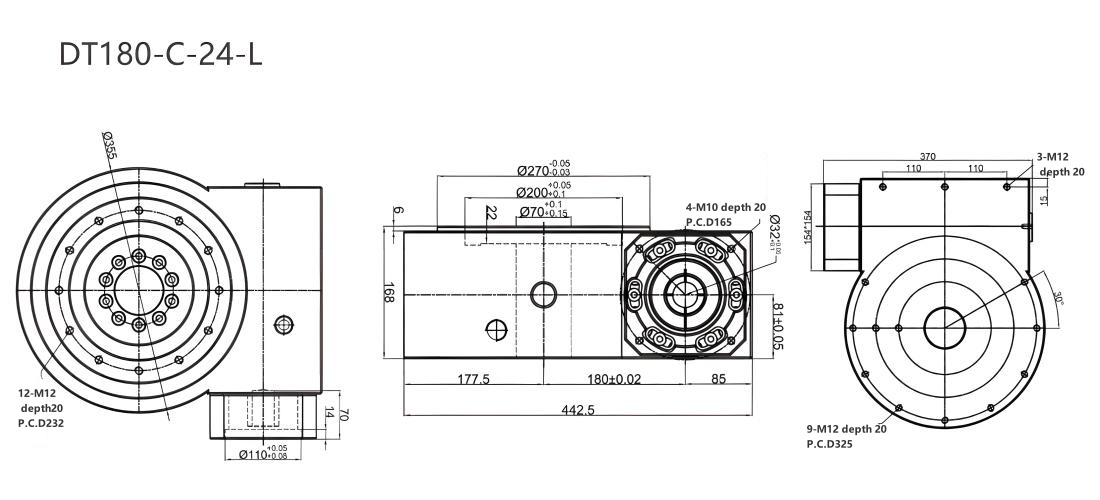
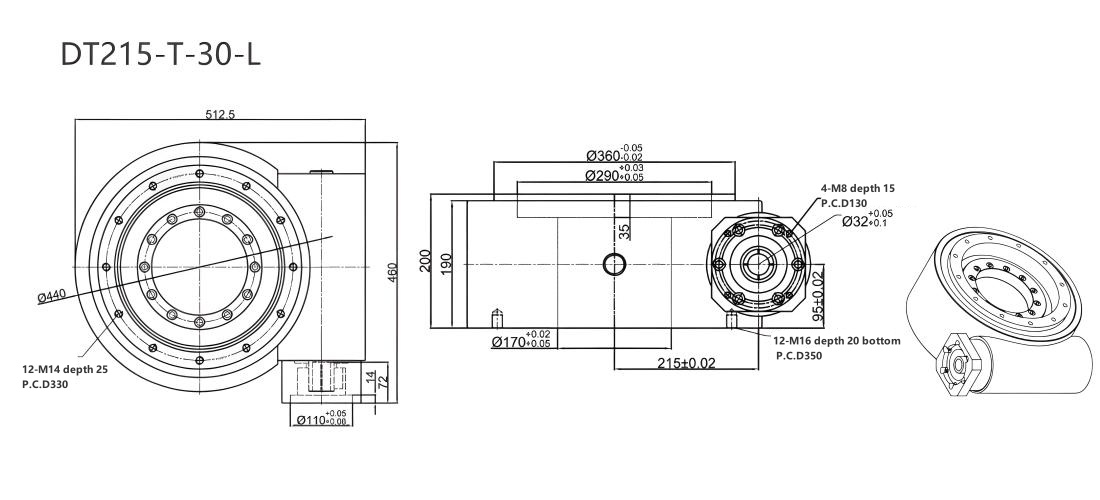
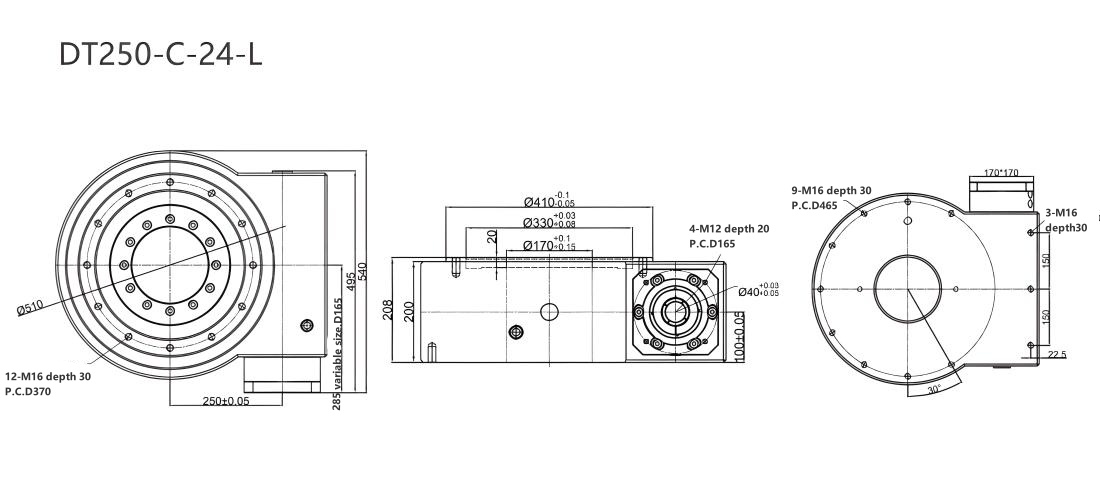
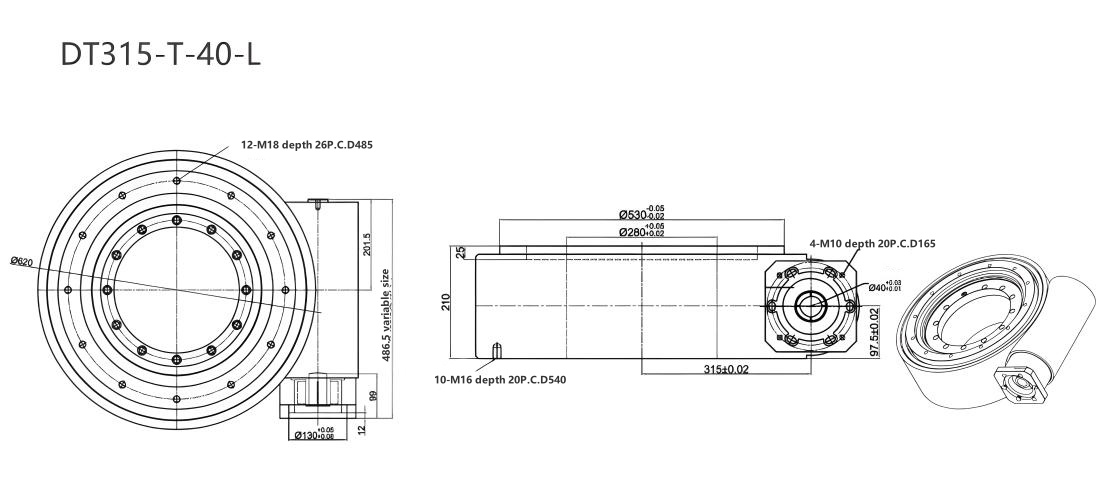
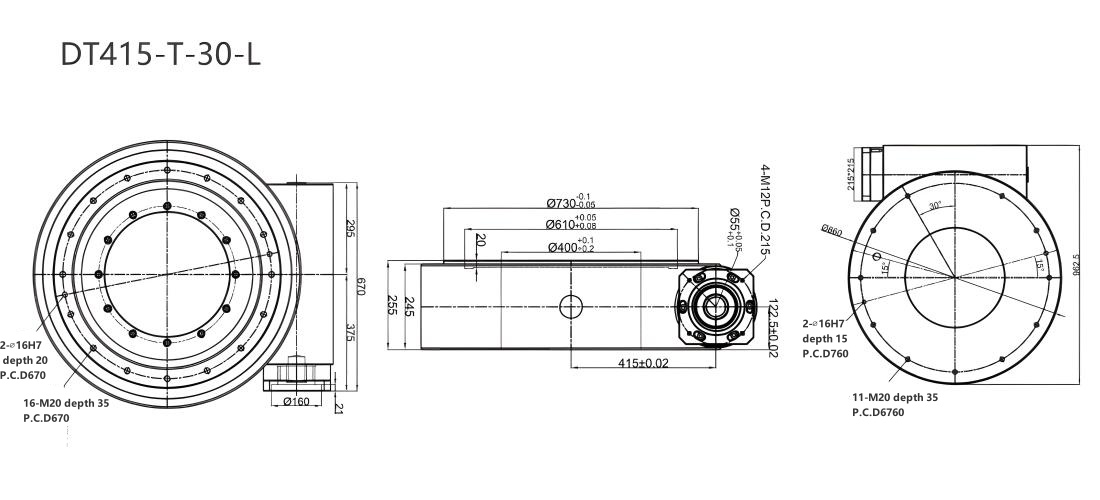
Model Description
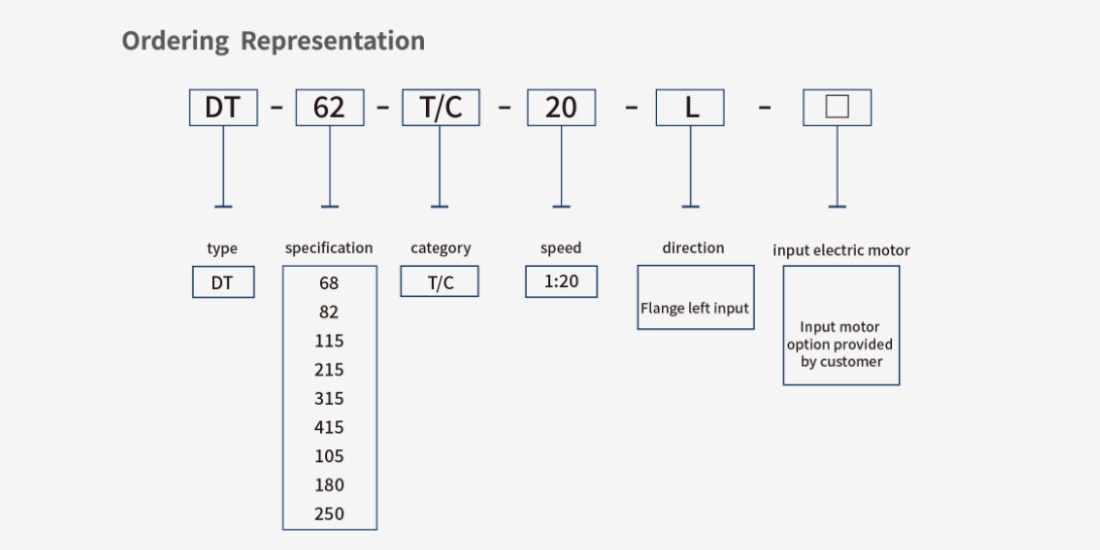
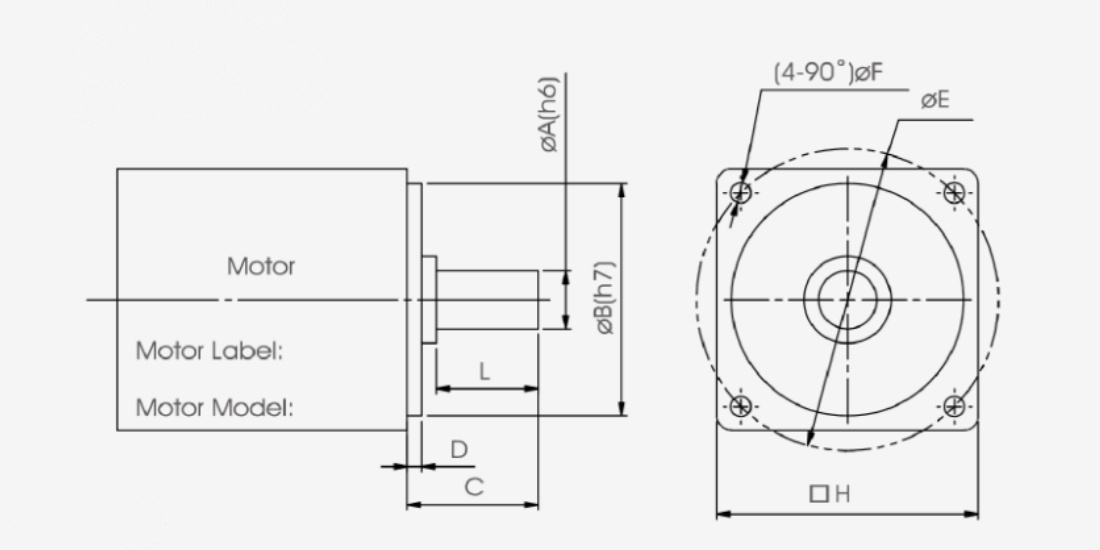
Motor Shaft Dia | Flange Dia. | Motor Shaft Length | Flange Height | P.C.D of Bore | Bore Dia. | Motor Flange Square | Actual Length of Motor Shaft | Backlash |
∅A(h6) | ∅B(h7) | C | D | ∅E | ∅F | □H | L | P0/P1/P2 |
Product parameters
Specifications | DT-68-T-20-L | DT-82-T-20-L | DT105-C-24-L | DT-115-T-20-L | DT180-C-24-L | DT215-T-30-L | DT250-C-24-L | DT315-T-40-L | DT415-T-30-L |
Reduction ratio i | 1:20 | 1:20 | 1:24 | 1:20 | 1:24 | 1:30 | 1:24 | 1:40 | 1:30 |
Applicable motor | Servo motor+ planetary reducer | ||||||||
Allowable moment of inertia | 18(178) | 36.8(361) | 45(441) | 183(1793) | 980(9605) | 1070(10500) | 16500(160170) | 2355 | 2250(22050) |
Allowable speed (r/min) | <1000 | ||||||||
Allowable radial load (Nm) | 1580 | 3400 | 3700 | 9050 | 20620 | 23250 | 38310 | 39500 | 66385 |
Allowable axial load (Nm) | 2160 | 4300 | 4200 | 11760 | 26800 | 30100 | 49800 | 51000 | 86300 |
Positioning accuracy arc-sec | ±10 | ±10 | ±20 | ±15 | ±30 | ±20 | ±30 | ±15 | ±20 |
Repeat positioning accuracy (sec) | ±5 | ±5 | ±10 | ±5 | ±10 | ±5 | ±10 | ±5 | ±5 |
Parallelism of rotary table (mm) | ±0.005 | ||||||||
Rotating platform concentricity mm | ±0.01 | ||||||||
Accuracy life hr | 20000 | ||||||||
Protection level | IP40 | ||||||||
Weight Kg | 18 | 18 | 25 | 48 | 185 | 230 | 360 | 460 | 670 |
Warm reminder: Flange connection size can be customized | |||||||||
Application
Automated production line
Hollow rotating platform is used for material handling, product assembly and testing. Precisely rotate circuit boards when assembling electronic products, and drive packaging boxes with food packaging to improve efficiency and precision.
CNC machine tools
In tool exchange systems, fast positioning of tool libraries is achieved to reduce auxiliary time. When processing precision molds, accurate tool switching is ensured to improve processing accuracy and quality.
Industrial robots
Used in joints to provide space for cables and air pipes to pass through. Welding robots use this to adjust the angle position of tools to improve welding quality and efficiency.
Warehousing and logistics equipment
Used in automatic sorting machines and stackers to achieve precise positioning of cargo pallets, facilitate storage and retrieval, optimize processes, and improve space utilization and turnover efficiency.
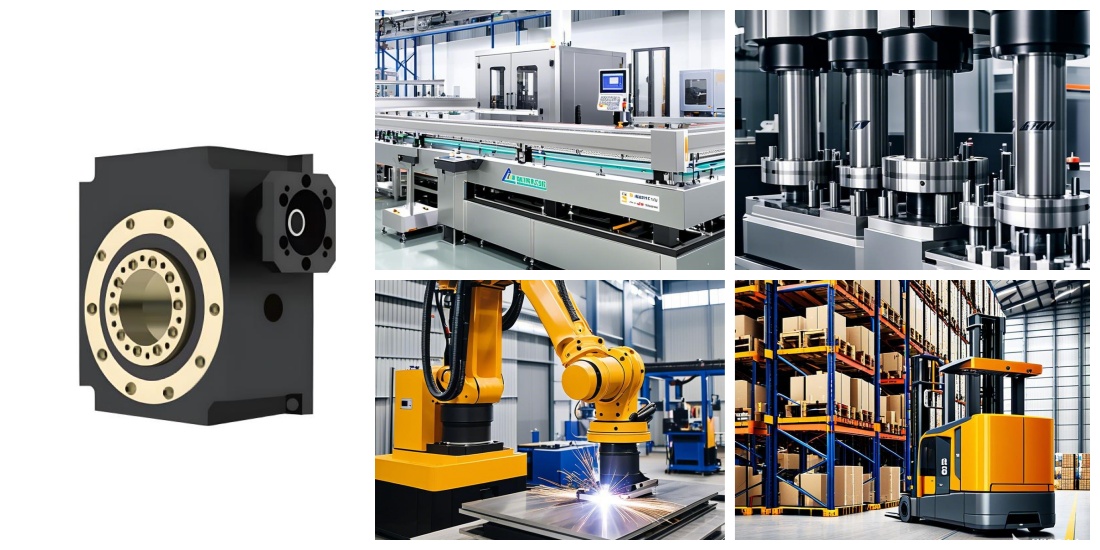
Quality Assurance
Product design and development: During the design phase of the central control rotary platform, a team of professional engineers gathered together to use advanced computer-aided design (CAD) and simulation analysis software to perform fine simulation and optimization of core parts such as product structure, power transmission, and control logic to ensure the reliability and stability of product performance from the source. All design plans must undergo multiple rounds of internal review and test verification before they can enter the production stage.
Raw material procurement: Strictly screen raw material suppliers to establish long-term, stable and high-standard cooperative relationships. For each batch of raw materials, strict quality inspections are carried out, covering the composition analysis of metal materials, mechanical performance testing, electrical parameter testing of electronic components, reliability testing, etc. Only raw materials that meet or exceed industry standards will be allowed to be put into production to ensure the basic quality of the product.
Production process control: The production workshop operates in accordance with a strict quality management system, introduces automated production equipment and high-precision testing instruments, and realizes the standardization and refinement of the production process. At each key node of production, quality inspection points are set up to conduct real-time sampling and full inspections of semi-finished products, including component processing accuracy inspection, assembly quality inspection, and initial electrical performance testing. For quality problems that occur during the production process, the traceability and rectification mechanism is immediately activated to ensure that the problematic products do not flow into the next link.
Finished product inspection: Each central control rotary platform must undergo a comprehensive and rigorous finished product inspection process before leaving the factory. Inspection items include but are not limited to no-load operation test, full-load operation test, positioning accuracy test, repeated positioning accuracy test, noise and vibration test, electrical safety performance test, etc. Only equipment whose indicators fully meet the product quality standards will be labeled as qualified and allowed to leave the factory.








